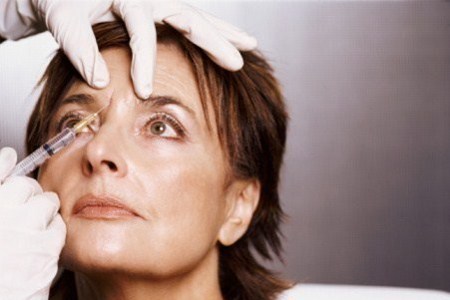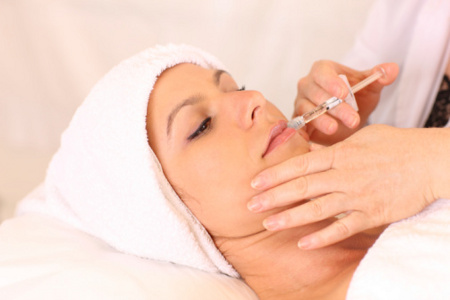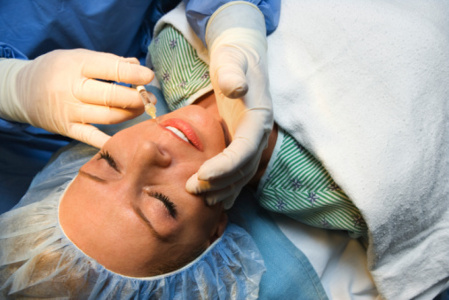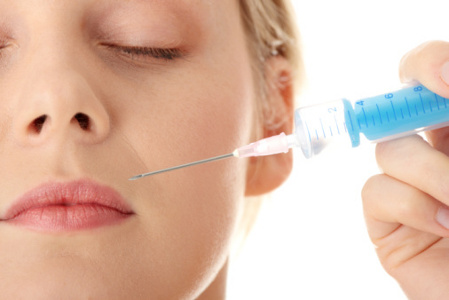Dermatologic Treatments for Aging Skin
0 Comments
What Can You Do?
No one can avoid the fine lines and wrinkles associated with the natural process of aging. Sun damage over the course of a lifetime can worsen aging skin. When anti-aging creams are not enough to improve advanced signs of aging and sun damage, the following dermatologic treatments may be what you are looking for. Photo: Getty Images

Soft Tissue Fillers
The injection of soft tissue fillers is a procedure used to improve the appearance of fine lines and wrinkles. A dermatologist injects the soft tissue filler beneath the surface of the skin where it temporarily plumps and smooths out the lines and wrinkles. Fillers are a flexible substance made of either human or bovine collagen, hyaluronic acid, the patient’s own fat or donor tissue. This non-surgical procedure replaces collagen, hyaluronic acid and elastin, which are all components of skin. Photo: Getty Images

Botulinum Toxin
The injection of very small amounts of botulinum toxin into specific facial muscles immobilizes and blocks the nerve impulses to the muscle. This dermatologic procedure is often used to improve deep wrinkles between the eyebrows, across the forehead and at the corner of the eyes. Since the effect wears off, injections need to be repeated every few months. The toxin is a purified substance derived from the bacterium, Clostridium botulinum, which is a potent neurotoxin. Photo: Getty Images

Implants
Synthetic implants are used to improve deep wrinkles. Implants made of highly porous and inert synthetic material are surgically implanted under the skin to fill out wrinkles. The patient’s skin cells and blood vessels can pass easily through the porous material. This reduces the risk of severe irritation. Allergic reactions are rare but possible. Photo: Getty Images

Collagen and Polymethylmethacrylate Injections
Injections of an inert substance called polymethylmethacrylate ( PMMA) enclosed in tiny droplets of natural collagen are given to improve wrinkles. The patient’s body absorbs the collagen while PMMA, which is not absorbed, stimulates new collagen growth. PMMA keeps the implant from degrading as quickly as a collagen-only implant. Repeat injections may be necessary and allergic reactions are possible. Photo: Getty Images

Chemical Peel
Chemical peels are used to treat fine lines under the eyes and around the mouth. A chemical solution is applied to the skin, typically the face, neck or hands. This technique causes the skin to blister and eventually peel off. The result is new rejuvenated skin that is usually smoother and less wrinkled than the old skin. Wrinkles caused by sun damage and aging can be reduced and sometimes, eliminated with this procedure. A chemical peel can be performed in a dermatologist’s office or as an outpatient in a surgery center. Photo: Getty Images

Laser Resurfacing
Laser resurfacing is the latest in skin rejuvenation. A dermasurgeon uses a wand-like laser hand-held device to direct an intense beam of light on the targeted areas of skin. Wrinkles and undesired skin cells disappear in a puff of mist, and are replaced with new skin cells. This procedure offers more control in the depth of penetration of the skin’s surface and allows for more precision and safety in treating delicate areas. Laser resurfacing is performed in the dermasurgeon’s office. It is used to erase fine lines and wrinkles on the face, smooth and tighten the eyelids and improve crow’s feet around the eyes, frown lines, skin tone and texture. Photo: Getty Images

Dermabrasion
Dermabrasion is a skin resurfacing technique first used to improve skin scars caused by acne, chicken pox and accidents. It is now used to treat wrinkles and age spots. The procedure is performed either in a dermasurgeon’s office or as an outpatient in a surgical center. During dermabrasion, the dermasurgeon freezes the patient’s skin. Using a high-speed rotary instrument with an abrasive wheel or brush, the dermasurgeon removes the upper layers of skin. A new layer of skin replaces the damaged skin. The newly formed skin has a smooth, rejuvenated appearance. Sources American Academy of Dermatology: Soft Tissue Fillers Botulinum Toxin University of Maryland Medical Center: Skin Wrinkles and Blemishes - Implant Procedures American Society of Dermatologic Surgery: Chemical Peels Laser Resurfacing Authored by Maryann Gromisch Photo: Getty Images
Add a CommentComments
There are no comments yet. Be the first one and get the conversation started!